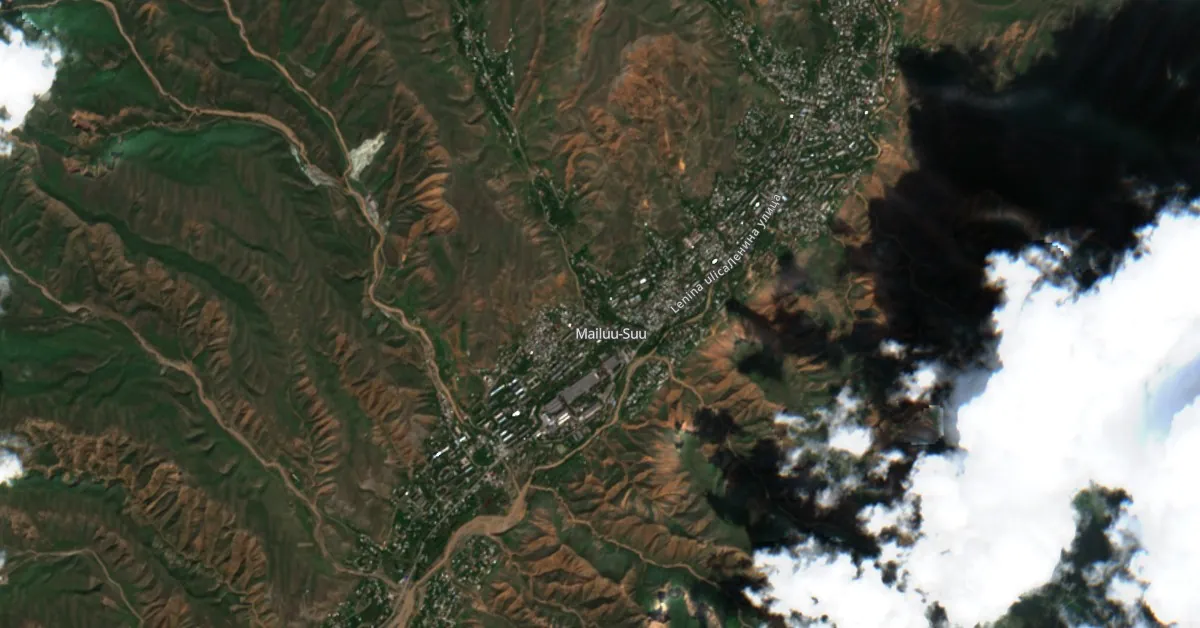Unstable uranium tailings dams in Mailuu-Suu, Kyrgyzstan pose nuclear threat to millions

Recent studies have exposed a critical risk in Kyrgyzstan, where unstable dams holding approximately 700 000 cubic meters (918 000 cubic yards) of uranium mine tailings threaten to unleash a large-scale nuclear disaster on the Fergana Valley, potentially displacing millions and rendering the region uninhabitable.
Recent environmental studies have raised alarming concerns about the stability of dams in Kyrgyzstan’s Mailuu-Suu region that are holding approximately 700 000 cubic meters (918 000 cubic yards) of uranium mine tailings.
The dams, compromised following a 2017 landslide, are unstable and now pose a grave threat to the Fergana Valley, a fertile region central to the agricultural output of Central Asia. The dams are situated near the Mailuu-Suu River, a crucial waterway that irrigates farmland across Kyrgyzstan, Uzbekistan, and Tajikistan. They are remnants of Soviet-era uranium mining and processing practices.
During the mid-20th century, the Soviet Union established numerous uranium extraction sites across its vast territories, including several in Kyrgyzstan, to fuel its growing nuclear arsenal and energy needs. The Mailuu-Suu region, developed between the 1940s and 1960s, became one of the largest uranium ore dumps. However, the environmental and safety standards during this era were often overlooked, leading to the current precarious situation.
Radioactive waste is stored in 23 tailings ponds and 13 mining debris heaps along the Mailuu-Suu River, which feeds into the Syr Darya River. Landslides, mudslides and floods have already damaged some of these tailings, and some are in high-risk areas where major landslides are expected.
According to the European Commission and the European Bank for Reconstruction and Development, which are involved in efforts to reinforce these facilities, the current situation could lead to a catastrophic environmental disaster if further landslides or earthquakes were to occur. Such an event could displace millions of people in the three countries.
The weakening of the dams’ foundations was exacerbated by water intrusion during the 2017 landslide, which also raised the river’s water level closer to the tailings. In response, the Bishkek government, in collaboration with G.E.O.S., has estimated that relocating the waste to a safer location away from the river would cost between 22 – 25 million Euros ($23 – 26 million).
The Fergana Valley, home to 16 million residents, is the most densely populated area in Central Asia. Many of these inhabitants rely on agriculture, growing cotton, rice, grains, fruits, and vegetables. The potential contamination of the Mailuu-Suu River with radioactive waste would devastate this critical economic sector and pose severe health risks.
Gulshair Abdullayeva, a manager at the Mailuu-Suu radiology lab, warned that if a landslide were to burst the river banks, radioactive waste from two mine dumps would contaminate the water system. The environmental impact, she noted, could rival the Chernobyl disaster.
Sebastian Hess, an engineer with the German firm G.E.O.S., further highlighted the risks, pointing out that the waste is liquid and thus more likely to seep into the river during strong seismic activities. “This would be a horrible catastrophe,” he stated, emphasizing that the river water used for irrigation would contaminate agricultural produce.
The immediate consequences in case of collapse would include the contamination of the Mailuu-Suu River, which is central to the region’s irrigation systems. Radioactive materials could leach into soil and water, adversely affecting crop yields and leading to long-term soil degradation that could take decades to remediate.
The health implications for the local population in the event of collapse range from acute radiation sickness to long-term increases in cancer rates and genetic disorders, making preventative measures and swift action crucial to mitigate the potential impacts and ensure the safety and sustainability of the region’s environment and public health.
The legacy of uranium mining in the United States, particularly on Navajo Nation land, and Northern Saskatchewan, Canada, offers insight into the challenges faced by Kyrgyzstan. In both regions, historical neglect left behind significant environmental and health issues, such as water contamination and elevated cancer rates. These areas have since seen efforts to remediate damage, with Canada taking proactive measures involving government, mining companies, and indigenous communities to clean up and prevent further harm.
Similarly, Germany’s extensive cleanup of the Wismut GmbH uranium mining sites post-reunification stands as one of the largest environmental remediations in history.
The Mailuu-Suu region remains one of the world’s largest uranium ore dumps. With a history of processing uranium ore from neighboring mines, the area’s nuclear waste management has now become a critical issue demanding urgent attention to prevent a disaster of unprecedented scale.
References:
1 Unstable nuclear-waste dams threaten fertile Central Asia heartland – Reuters – April 24, 2024
2 Remediation of Kyrgyz uranium legacy site to start – WNN – May 19, 2023
3 Kyrgyz Town Lives with Radioactive Soviet Legacy – NPR – February 5, 2008
Featured image credit: Copernicus EU/Sentinel-2, The Watchers. Acquired on April 17, 2024

Commenting rules and guidelines
We value the thoughts and opinions of our readers and welcome healthy discussions on our website. In order to maintain a respectful and positive community, we ask that all commenters follow these rules.